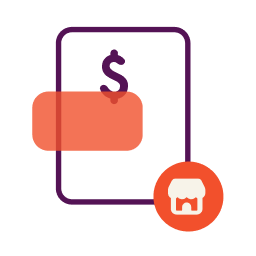With the rise of the internet, many merchants have gained more insights into the workings of the merchant processing industry today than ever before. This includes the following facts:
- The processing terminals that were pitched on multi-year leases for $50 to $120 per month, wholesale for only $200 – $400.
- The interchange base rates are highly visible, with V/MC for example, posting new variations twice per year in April and November.
- There are multiple players in the processing ecosystem.
- The merchant processing industry at times employs some of the most unscrupulous players, agents, and managers.
The above phenomena has helped turn merchant processing into somewhat of a commodity. Many merchants see little difference between processing companies, choosing a company based on their quoted “processing rates,” even though with interchange included, many merchants still might not fully understand what (and how) they are paying.
Race To The Bottom Continues
Another reason merchant processing is seen as a commodity these days is due to the industry’s seeming lack of innovation, but a continued focus on a “race to the bottom” in terms of marketing lower processing rates to merchants. Well, in 2017, a new “race to the bottom” campaign began taking place wide-scale in the merchant processing industry, with many large companies promoting their cash discount and surcharging programs to merchants, using the pitch of “Zero Processing Rates.” (Many merchants also negotiate for lower merchant processing rates.) For this article, I will discuss these two programs in more detail.
Cash Discount
The basic premise of the cash discount and surcharging Programs is that a merchant can pass through portions of the processing rates/costs to their customer base. The way this is implemented would be different depending on if the merchant is using a cash discount or a surcharging program. With cash discount, the merchant can simply raise all of their prices and offer a discount for those customers that pay in cash, basically having a “cash price” and a “credit card” price. This method doesn’t require the merchant having to register with the card brands.
Surcharging
With surcharging, the merchant would actually state that if a customer is using a credit card, there will be a certain “fee” in relation to the utilization. This would require the merchant having to register with the card brands, unless they operate in one of the 10 states that ban surcharging. The 10 states that ban surcharging include California, Colorado, Connecticut, Florida, Kansas, Maine, Massachusetts, Texas, Oklahoma, and New York. Also due to regulations from the Durbin Amendment, surcharging cannot apply to debit cards, only credit cards, in the states that allow the practice. There’s a 4% max limitation on the amount of the surcharge fee.
Should You Use One Of These Programs?
The programs have been implemented in a variety of industries, but the cash discount method is something that could be implemented on your own as a business owner, without the use of any merchant processing organization. You could simply both raise all of your prices and offer your own discount at checkout for cash usage, similar to how many gas stations operate.
When working with a merchant processing organization for one of these programs, they would usually require you to use a specialized processing terminal when running one of the programs.
But whether or not the program(s) will work for your business, just mainly depends on your region, your average ticket, your customer base, and other surrounding economic conditions. If your customers have no issue paying the higher costs to use the credit card, then this could be a great way to cover most of the costs in relation to processing (note, these programs will not eliminate all processing fees).
However, if your customers are offended at the notion of having to pay some sort of higher price to use their preferred payment option (credit cards), it could lead to lower average tickets and/or potential loss of customers. This is why if said program will be implemented, it should be monitored on a close basis, as it might be causing customers to leave or average tickets to fall, it would need to either be modified or pulled from your organization immediately.
This article was originally written on January 22, 2018 and updated on February 1, 2021.



Is it true that at the end of the year your 1099 k will reflect. All the fees the customers paid (4%)